
Jack Butler Yeats RHA was an Irish artist. Born into a family of impoverished Anglo-Irish landholders, his father was the painter John Butler Yeats, and his brother was the poet W. B. Yeats. Jack B. was born in London but was raised in County Sligo with his maternal grandparents, before returning to London in 1887 to live with his parents. Afterwards he travelled frequently between the two countries; while in Ireland he lived mainly in Greystones, County Wicklow and in Dublin city.

The Victoria and Albert Museum in London is the world's largest museum of applied arts, decorative arts and design, housing a permanent collection of over 2.8 million objects. It was founded in 1852 and named after Queen Victoria and Prince Albert.
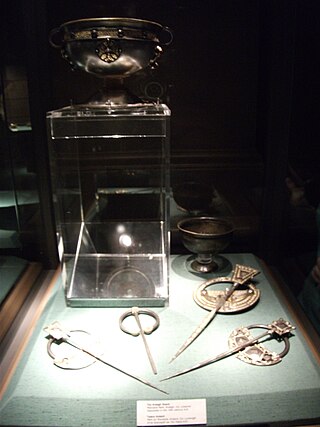
The Ardagh Hoard, best known for the Ardagh Chalice, is a hoard of metalwork from the 8th and 9th centuries. Found in 1868 by two young local boys, Jim Quin and Paddy Flanagan, it is now on display in the National Museum of Ireland in Dublin. It consists of the chalice, a much plainer stemmed cup in copper-alloy, and four brooches — three elaborate pseudo-penannular ones, and one a true pennanular brooch of the thistle type; this is the latest object in the hoard, and suggests it may have been deposited around 900 AD.

The National Museum of Ireland is Ireland's leading museum institution, with a strong emphasis on national and some international archaeology, Irish history, Irish art, culture, and natural history. It has three branches in Dublin, the archaeology and natural history museums adjacent on Kildare Street and Merrion Square, and a newer Decorative Arts and History branch at the former Collins Barracks, and the Country Life museum in County Mayo.

The National Museum is a museum in Oslo, Norway which holds the Norwegian state's public collection of art, architecture, and design objects. The collection totals over 400,000 works, amongst them the first copy of Edvard Munch's The Scream from 1893. The museum is state-owned and managed by the Norwegian Ministry of Culture.

The Salar Jung Museum is an art museum located at Dar-ul-Shifa, on the southern bank of the Musi River in the city of Hyderabad, Telangana, India. It is one of the notable National Museums of India. Originally a private art collection of the Salar Jung family, it was endowed to the nation after the death of Salar Jung III. It was inaugurated on 16 December 1951.

Irish art is art produced in the island of Ireland, and by artists from Ireland. The term normally includes Irish-born artists as well as expatriates settled in Ireland. Its history starts around 3200 BC with Neolithic stone carvings at the Newgrange megalithic tomb, part of the Brú na Bóinne complex which still stands today, County Meath. In early-Bronze Age Ireland there is evidence of Beaker culture and widespread metalworking. Trade-links with Britain and Northern Europe introduced La Tène culture and Celtic art to Ireland by about 300 BC, but while these styles later changed or disappeared elsewhere under Roman subjugation, Ireland was left alone to develop Celtic designs: notably Celtic crosses, spiral designs, and the intricate interlaced patterns of Celtic knotwork.
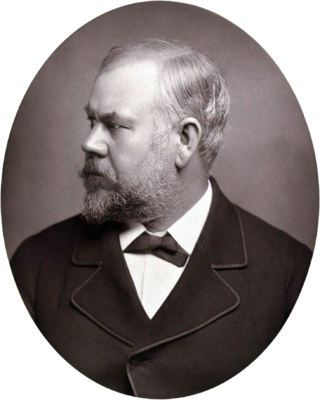
Henry Hugh Armstead was an English sculptor and illustrator, influenced by the Pre-Raphaelites.

Julio González i Pellicer, born in Barcelona, was a Spanish sculptor and painter who developed the expressive use of iron as a medium for modern sculpture. He was from a lineage of metalsmith workers and artists. His grandfather was a goldsmith worker and his father, Concordio González, a metalsmith worker who taught him the techniques of metalsmith in his childhood years. His mother, Pilar Pellicer Fenés, came from a long line of artists.
Aristides Burton Demetrios was an American sculptor.
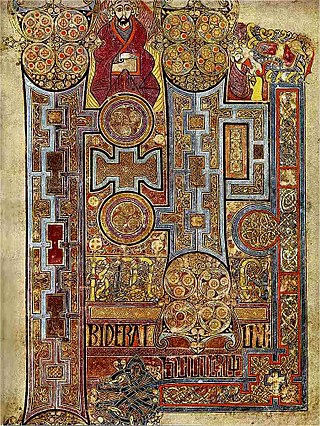
Insular art, also known as Hiberno-Saxon art, was produced in the post-Roman era of Great Britain and Ireland. The term derives from insula, the Latin term for "island"; in this period Britain and Ireland shared a largely common style different from that of the rest of Europe. Art historians usually group Insular art as part of the Migration Period art movement as well as Early Medieval Western art, and it is the combination of these two traditions that gives the style its special character.
Eileen MacDonagh was born in Geevagh, County Sligo in 1956 and has worked as a sculptor since the 1980s. For her contribution to sculpture and the Arts in Ireland, MacDonagh was elected in 2004 to Aosdána, the Irish organisation that recognises artists that have contributed a unique body of work.

Government Museum and Art Gallery, Chandigarh, is a public museum of North India having collections of Gandharan sculptures, sculptures from ancient and medieval India, Pahari and Rajasthani miniature paintings. It owes its existence to the partition of India. Prior to the partition, much of the collections of art objects, paintings and sculptures present here were housed in the Central Museum, Lahore, the then capital of Punjab. The museum has one of the largest collection of Gandharan artefacts in the world.

The Sculpture in the Parklands is a 50-acre (200,000 m2) land and environmental sculpture park located in Lough Boora, County Offaly, Ireland. The park is open to the public 365 days of the year and admission is free.

The National Museum of Ireland – Archaeology is a branch of the National Museum of Ireland located on Kildare Street in Dublin, Ireland, that specialises in Irish and other antiquities dating from the Stone Age to the Late Middle Ages.

John Paul Cooper was a British architect and a leading craftsman in the Arts and Crafts Movement, specialising in metalwork and jewellery. He is particularly noted for the use of materials such as shagreen and ostrich egg in combination with precious metals and gemstones.

In the early Middle Ages, there were distinct material cultures evident in the different federations and kingdoms within what is now Scotland. Pictish art was the only uniquely Scottish medieval style; it can be seen in the extensive survival of carved stones, particularly in the north and east of the country, which hold a variety of recurring images and patterns. It can also be seen in elaborate metal work that largely survives in buried hoards. Irish-Scots art from the kingdom of Dál Riata suggests that it was one of the places, as a crossroads between cultures, where the Insular style developed.

Michael Bulfin is an Irish sculptor and visual artist, based in Dublin. He is the son of Irish republican Éamonn Bulfin and grandson of William Bulfin of Derrinlough, Birr, County Offaly. He was educated at University College Dublin and Yale University, Connecticut, USA. He was awarded a German Government Scholarship in 1965 to study at a research laboratory in Hamburg, Germany, German Academic Exchange Service. He was chairman of the Project Arts Centre and the Sculptors Society of Ireland, and is a member of Aosdána.
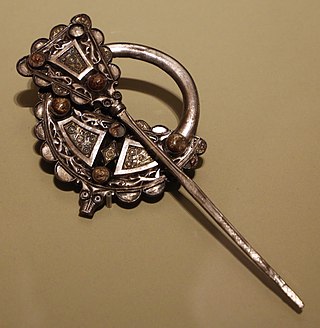
The Roscrea brooch is a 9th-century Celtic brooch of the pseudo-penannular type, found at or near Roscrea, County Tipperary, Ireland, before 1829. It is made from cast silver, and decorated with zoomorphic patterns of open-jawed animals and gilded gold filigree, and is 9.5 cm in height and 8.3 cm wide. The silver is of an unusually high quality for Irish metalwork of the period, indicating that its craftsmen were both trading materials with settled Vikings, who had first, traumatically, invaded the island in the preceding century, and had absorbed elements of the Scandinavian's imagery and metalwork techniques.
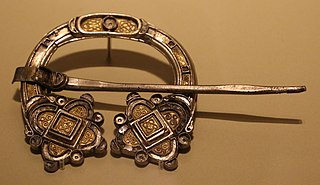
The Kilmainham Brooch is a late 8th- or early 9th-century Celtic brooch of the "penannular" type. With a diameter of 9.67 cm, it is a relatively large example, and is made from silver, gold and glass, with filigree and interlace decorations. Like other high-quality brooches of its class, it was probably intended to fasten copes and other vestments rather than for everyday wear, as its precious metal content would have made it a status symbol for its owner; less expensive Viking-style brooches were typically worn in pairs on women's clothing.




















